Home>diy>Building & Construction>What Do You Need To Start Building A House
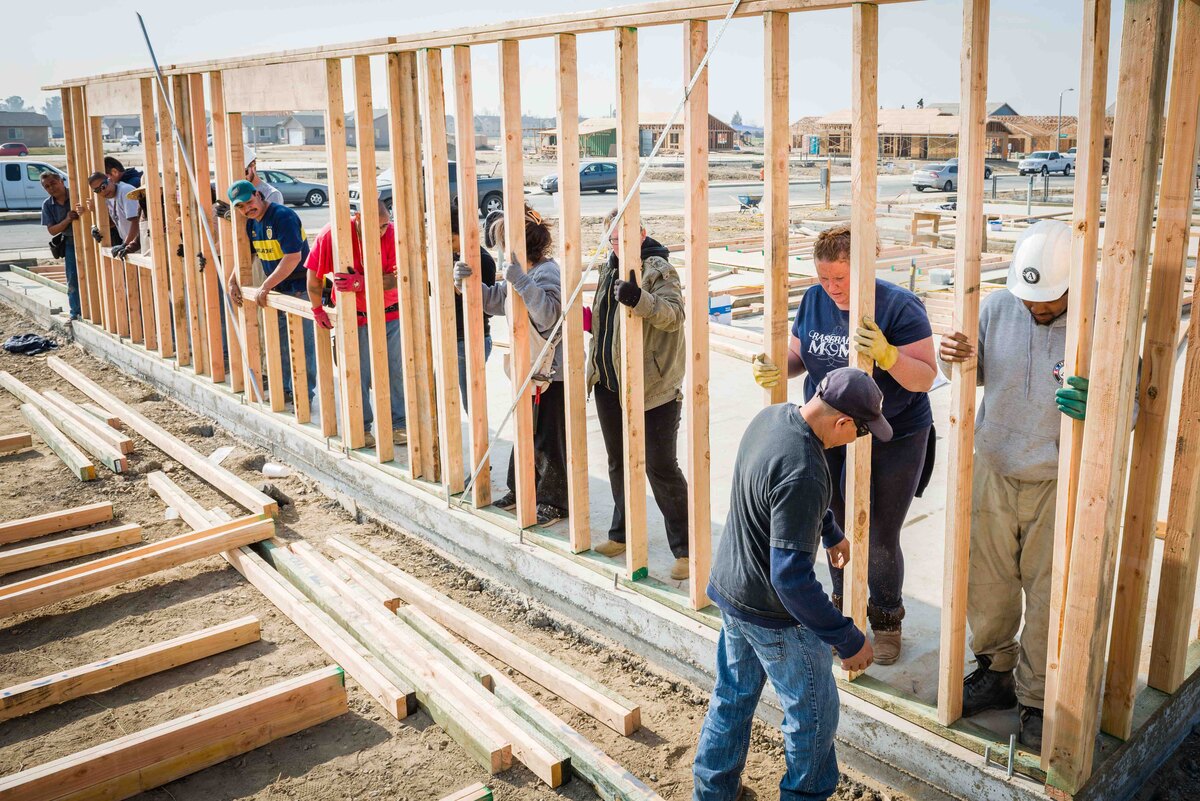

Building & Construction
What Do You Need To Start Building A House
Modified: February 25, 2024
Discover the essentials needed for building a house from scratch. From permits to materials, learn all about the construction process and get started today.
(Many of the links in this article redirect to a specific reviewed product. Your purchase of these products through affiliate links helps to generate commission for Storables.com, at no extra cost. Learn more)
Introduction
Building a house is an exciting endeavor that allows you to create a dream home tailored to your specific needs and preferences. Whether you’re a first-time homeowner or looking to upgrade to a larger space, the process of building a house requires careful planning, organization, and a team of professionals to bring your vision to life.
In this article, we will guide you through the essential steps needed to start building a house. From securing land and permits to selecting the right professionals and overseeing the construction process, we will provide you with valuable insights and tips to make the journey smoother and more successful.
Building a house is not a task to be taken lightly. It requires a significant investment of time, money, and effort. However, with proper planning and the right team by your side, you can navigate the process with confidence and achieve the home of your dreams.
Before embarking on this exciting journey, it’s important to have a clear understanding of your goals and expectations. Take the time to envision your ideal home, considering factors such as size, layout, architectural style, and amenities. This will help you make informed decisions throughout the construction process and ensure that the end result reflects your unique vision.
Throughout the construction process, it’s crucial to maintain open communication with your team of professionals, including architects, contractors, and project managers. Regular meetings and updates will help keep everyone on the same page and ensure that your vision is being executed to the highest standards.
Are you ready to turn your dream home into a reality? Let’s delve into the essential steps to start building a house.
Key Takeaways:
- Building a house involves careful planning, attention to detail, and the expertise of professionals to bring your vision to life. From securing land and obtaining permits to final inspections, each step is crucial for creating a home that reflects your unique identity and suits your lifestyle.
- The process of building a house is an opportunity to design a space where memories are made, relationships are nurtured, and dreams are realized. Embrace the challenges and joys that come with building a house, and enjoy the satisfaction of watching your dream home come to life.
Read more: What Do You Need To Do To Design A House
Land and Permits
When it comes to building a house, one of the first steps is to secure a suitable plot of land and obtain the necessary permits and approvals. Finding the right location for your future home is crucial, as it will impact factors such as accessibility, neighborhood, and overall value.
Start by researching the real estate market and identifying areas that align with your preferences and budget. Consider factors such as proximity to amenities, schools, work, and transportation. Once you’ve narrowed down your options, work with a real estate agent to find available land that meets your criteria.
Once you’ve found a suitable piece of land, the next step is to obtain the necessary permits and approvals from local authorities. Building codes and regulations vary from one jurisdiction to another, so it’s important to become familiar with the specific requirements in your area.
Visit the local building department or planning office to obtain information about the permits needed for your construction project. This may include permits for demolition (if required), land preparation, foundation work, plumbing and electrical installations, and overall building construction.
Working with an architect or builder who is experienced in the local regulations can be tremendously helpful in navigating the permit process. They will ensure that your plans comply with building codes and will assist in preparing the necessary documents for permit applications.
It’s important to note that obtaining permits can take time, so factor this into your construction timeline. Depending on the complexity of the project and the workload of the local authorities, the permit process can range from a few weeks to several months.
During this stage, it’s also crucial to conduct a thorough site evaluation, assessing factors such as soil condition, drainage, and potential hazards. This evaluation will help determine if any special precautions or additional permits are required.
By securing a suitable plot of land and obtaining the necessary permits and approvals, you lay the foundation for a successful construction project. This initial step ensures that you have the legal right to build and sets the stage for the design and planning phases. With this important groundwork established, you are ready to move forward in bringing your dream home to life.
Design and Planning
Design and planning are integral parts of the house building process. This is where your vision for your dream home takes shape, and careful consideration and meticulous planning are essential for a successful outcome.
Start by hiring an architect or a designer who specializes in residential construction. Collaborate with them to bring your ideas and concepts to life, taking into account your lifestyle, desired layout, and architectural style preferences. Discuss important factors such as the number of bedrooms, bathrooms, living spaces, and any specific features or amenities you wish to include.
During the design phase, several iterations of floor plans and elevations will be created. These drawings will give you a visual representation of the proposed design and allow you to make any necessary adjustments before finalizing the plans.
In addition to the aesthetic aspects, your architect will consider practical considerations such as structural integrity, building codes, and energy efficiency. This ensures that your dream home not only looks beautiful but also meets the necessary standards and regulations.
Once the design phase is complete, the next step is to obtain construction documents that include detailed specifications and blueprints. These documents will serve as a guideline for the contractors and subcontractors involved in the construction process.
During the planning stage, it’s also essential to establish a realistic budget and timeline. This will help you keep track of expenses and ensure that the project stays on schedule. Consult with your architect and contractor to estimate costs for materials, labor, and any additional expenses such as permits and inspections.
Remember to factor in potential contingencies and unforeseen circumstances that may arise during the construction process. It’s a good idea to set aside a percentage of your budget as a buffer to account for unexpected expenses.
In addition to the architectural design, consider the interior design and finishes for your home. Select materials, finishes, and fixtures that align with your style and preferences. Consult with interior designers or visit showrooms to gather ideas and make informed decisions.
By investing time and careful consideration into the design and planning phase, you set the stage for a smooth and successful construction process. Clear and well-documented plans will help minimize changes and modifications during construction, saving you time, money, and stress.
Financing and Budgeting
Financing your house construction project and creating a realistic budget are crucial steps in ensuring its success. Building a house involves significant financial implications, and proper planning and management of finances are essential to avoid any financial pitfalls.
Start by assessing your financial situation and determining how much you can comfortably afford to allocate towards building your dream home. Consider factors such as your savings, income, existing debts, and the availability of financing options.
If you require additional funds to cover the cost of construction, explore various financing options such as construction loans, home equity loans, or mortgages. Consult with financial institutions to understand the terms, interest rates, and repayment options that suit your needs.
Once you have secured financing, it’s important to create a detailed budget for your construction project. This involves estimating the costs of materials, labor, permits, and any additional expenses such as architectural fees and landscaping.
Consult with your architect and contractor to accurately estimate the costs associated with the construction process. Be sure to consider both the initial construction costs as well as any ongoing expenses such as maintenance and utility bills.
When creating a budget, be realistic and account for unforeseen contingencies. It’s advisable to set aside a portion of your budget as a contingency fund to cover unexpected expenses that may arise during the construction process.
Keep in mind that construction costs can vary depending on factors such as the size, complexity, and location of your house. Research the current market prices for materials and labor in your area to ensure that your budget is accurate and up-to-date.
Regularly track and monitor your expenses throughout the construction process to stay within your budget. Review your budget regularly and make adjustments as needed. Communication with your contractor and team is key to ensuring that everyone is aware of the budget constraints and actively works to stay within the allocated funds.
Remember that building a house is a long-term investment, and having a well-managed budget will not only protect your finances but also ensure that you have the financial flexibility to enjoy your new home once it’s completed.
By carefully managing your finances and creating a realistic budget, you can embark on your house building journey with confidence, knowing that you have a solid financial plan in place.
Hiring Professionals and Contractors
Building a house is a complex project that requires the expertise of various professionals and contractors. Choosing the right team is essential for a successful and hassle-free construction process.
Start by hiring an architect or designer who will work closely with you to create the blueprint and design for your dream home. Look for professionals with experience in residential construction and a portfolio that aligns with your vision and style preferences.
Next, it’s crucial to hire a reputable and licensed general contractor who will oversee the entire construction process. The contractor will act as your main point of contact and coordinate with subcontractors, ensuring that the project stays on schedule and meets the required quality standards.
When selecting a general contractor, consider factors such as their experience, track record, and client testimonials. Request multiple bids and compare them to ensure that you are getting the best value for your investment. Make sure to discuss the payment schedule and contract terms before making a final decision.
In addition to the general contractor, you will need to hire subcontractors for various specialized aspects of the construction process. This may include electricians, plumbers, carpenters, painters, and others. Choose professionals with relevant experience and proper licenses or certifications.
Do thorough research and check references before hiring any professionals or contractors. Take the time to interview them and ask for examples of their previous work. This will help you gauge their level of expertise and determine if they align with your expectations.
Communication is key when working with professionals and contractors. Clearly communicate your expectations, preferences, and timeline from the start. Maintain regular communication throughout the construction process to address any concerns or changes that may arise.
It’s also important to have a written contract in place with each professional or contractor. The contract should outline the scope of work, payment terms, project timeline, and any other important details. This will protect both parties involved and ensure that everyone is on the same page.
Remember, building a house is a collaborative process, and having a competent and reliable team of professionals and contractors is crucial. Their expertise and knowledge will contribute to a smooth and successful construction journey, resulting in a home that meets your expectations and stands the test of time.
Read more: What Tools Do You Need To Start Woodworking
Foundation and Site Preparation
The foundation and site preparation stage of building a house is critical, as it sets the groundwork for the entire structure. Proper foundation construction and site preparation are essential for the stability, safety, and longevity of your home.
The first step is to clear the construction site of any vegetation, debris, or obstacles. This includes removing trees, shrubs, and any existing structures that need to be demolished. Excavation may be necessary to level the ground and create a suitable foundation base.
Once the site is cleared, the next step is to evaluate the soil conditions. Soil testing will determine the type of foundation best suited for your specific location. The results of the soil test will help determine if any special foundation considerations are needed, such as deep foundations, piling, or soil stabilization techniques.
The most common types of foundations used in house construction are slab foundations, crawl space foundations, and basement foundations. The choice of foundation will depend on factors such as local building codes, soil conditions, and personal preferences.
For a slab foundation, a concrete slab is poured directly on the leveled ground. This is a popular choice in areas with stable soil conditions. Crawl space foundations involve building a raised floor above the ground, providing access to utilities and additional storage space. Basement foundations offer a full underground level that can be used for living space or storage.
Before pouring the foundation, the area will need to be marked and leveled. This involves setting the foundation forms and ensuring they are straight, square, and accurately positioned according to the design plans.
The next step is to pour concrete into the foundation forms, forming a sturdy and solid base for the house. The concrete will need to cure for a sufficient amount of time to achieve maximum strength before any further construction takes place.
During this stage, it’s important to conduct inspections to ensure that the foundation is built according to local building codes and standards. This may involve inspections by building officials and structural engineers to verify the integrity and compliance of the foundation.
In addition to the foundation, site preparation may also involve installing utility lines such as water, sewer, and electrical connections. This is the time to plan and lay the necessary infrastructure to ensure a properly functioning home.
Proper foundation construction and site preparation are crucial for the stability and longevity of your home. Involve experienced professionals, such as contractors and engineers, to ensure that the foundation is built to meet the highest standards and withstand the test of time.
Framing and Structural Work
The framing and structural work stage is an exciting phase of the house building process, as it involves bringing the design to life and creating the skeletal framework of your home.
The framing process begins with the construction of the walls, floors, and roof structure. The main materials used for framing are typically lumber or engineered wood products such as plywood and oriented strand board (OSB).
First, the exterior walls are framed, followed by the interior walls. This involves measuring and cutting the framing materials according to the architectural plans. The pieces are then assembled and secured using nails or screws.
Once the walls are up, the next step is to install the floor joists or trusses. These provide structural support for the floors and act as a framework for the upper levels of the house.
The roof structure is then built, consisting of rafters or trusses that form the framework for the roof. This provides the necessary support for the roof covering, whether it’s asphalt shingles, metal roofing, or another material of your choice.
During the framing process, it’s important to consider various factors such as load-bearing walls, door and window openings, and proper framing techniques to ensure stability and safety. This may involve consulting with structural engineers to ensure that the framing meets the required codes and can withstand the load it will be subjected to.
Another important aspect of the structural work is the installation of beams, columns, and supports. These elements provide additional structural reinforcement, especially for larger or more complex designs. They help distribute weight and ensure the structural integrity of the house.
Throughout the framing process, regular inspections by building officials are conducted to ensure that the framing work meets the necessary standards. These inspections help identify any potential issues and allow for corrections to be made before proceeding with the construction.
Once the framing and structural work is complete, the house starts to take shape, and you can see the actual rooms, doorways, and windows. This phase lays the foundation for the rest of the construction process, such as the installation of electrical and plumbing systems, insulation, and interior finishes.
Proper framing and structural work are crucial for the overall stability and durability of your home. It’s important to work with experienced contractors and professionals who understand the importance of precise measurements, proper techniques, and adherence to building codes.
By ensuring that the framing and structural work is of the highest quality, you can rest assured that your dream home will be built to last and provide a safe and comfortable environment for you and your family.
Plumbing and Electrical Systems
As you progress in the house building process, the installation of plumbing and electrical systems becomes a critical step. These systems are essential for the functionality, comfort, and convenience of your home.
The plumbing system includes the installation of water supply lines, drainage systems, and fixtures such as sinks, toilets, showers, and bathtubs. It’s important to work with licensed plumbers who understand local plumbing codes and can ensure the proper installation of pipes and fixtures.
During the plumbing installation, the plumber will carefully plan the routing of the pipes to connect the main water supply to each point of use in your home. This may involve cutting into walls and floors to lay the pipes and installing connectors, valves, and fittings for proper water flow control.
The drainage system ensures the proper disposal of wastewater from your home. This involves the installation of drain pipes, vents, and traps to prevent odors and allow for the proper flow of wastewater to the main sewer line or septic system.
Throughout the plumbing installation, regular inspections are typically conducted to ensure compliance with building codes and the proper functioning of the plumbing system.
Alongside the plumbing, the installation of the electrical system is equally important. This includes the wiring, outlets, switches, and lighting fixtures throughout your home.
For the electrical system, it’s essential to hire a licensed electrician who will ensure the safety and functionality of your electrical setup. The electrician will run electrical wiring through the walls, ceilings, and floors, connecting it to the main electrical panel.
The electrical panel serves as the central distribution point for electricity in your home, and it’s crucial to have the appropriate capacity to meet your electrical needs. The electrician will work closely with you to determine the number and placement of outlets, switches, and lighting fixtures, as well as any special electrical requirements based on your lifestyle or specific home features.
An electrical inspector may conduct inspections during the installation process to ensure adherence to electrical codes and safety standards.
It’s important to keep in mind that both plumbing and electrical systems require careful planning and coordination with other construction activities. Working closely with your contractors, plumbers, and electricians will ensure that the systems are installed correctly and in a timely manner.
Plumbing and electrical systems are the lifelines of your home, providing essential services and functionality. Hiring professionals who are experienced in their respective fields and using quality materials will contribute to the efficiency, safety, and long-term reliability of these systems.
Heating, Ventilation, and Air Conditioning
Heating, ventilation, and air conditioning (HVAC) systems play a pivotal role in creating a comfortable and healthy living environment in your newly built home. Proper installation of these systems is essential to ensure optimal temperature control, air quality, and energy efficiency.
The heating system is responsible for keeping your home warm during colder months. Common types of heating systems include furnaces, heat pumps, and radiant heating. The selection of a heating system depends on factors such as climate, fuel availability, budget, and personal preference.
Ventilation is crucial for maintaining a healthy indoor environment by providing fresh air circulation and removing pollutants, odors, and moisture. Proper ventilation helps eliminate stale air, control humidity levels, and prevent the buildup of harmful airborne contaminants. An efficient ventilation system can also contribute to energy savings by reducing the load on the heating and cooling systems.
Air conditioning systems are responsible for cooling and dehumidifying the air in your home during warmer months. Central air conditioning systems, ductless mini-split systems, and window units are common options. The choice of system will depend on factors such as the size and layout of your home, energy efficiency, and budget.
It’s crucial to work with experienced HVAC professionals who can help determine the appropriate sizing and type of system for your home based on factors such as square footage, insulation, and local climate.
Ductwork installation is an important component of HVAC systems in homes with forced-air heating and cooling. Proper installation and insulation of ducts ensure efficient airflow and prevent energy loss. Regular inspections and maintenance of the ductwork are necessary to ensure the system’s optimal performance.
Additionally, advancements in technology have given rise to more energy-efficient HVAC systems. Energy-saving features such as programmable thermostats, smart controls, and zone heating and cooling allow for better control and customization of temperature settings according to specific needs and schedules. Incorporating these technologies into your HVAC system can help reduce energy consumption and costs.
Proper maintenance and regular servicing of the HVAC system are crucial to ensure its longevity and optimal performance. This includes changing air filters, cleaning vents and ducts, and scheduling routine inspections by qualified technicians.
Remember, a well-designed and properly installed HVAC system not only enhances comfort but also contributes to energy efficiency and cost savings. Investing in quality equipment and professional installation will provide long-term benefits, creating a comfortable and healthy living environment for you and your family.
Before starting to build a house, make sure to have a clear and detailed plan, obtain necessary permits, and hire a reputable contractor and architect.
Insulation and Soundproofing
Insulation and soundproofing are crucial elements in creating a comfortable and peaceful living environment within your newly constructed home. Proper insulation helps regulate indoor temperature, improve energy efficiency, and reduce noise transmission between rooms.
Insulation acts as a barrier to heat flow, keeping your home cool in the summer and warm in the winter. It helps minimize heat loss or gain through walls, ceilings, and floors, allowing for more efficient temperature control and reducing energy consumption.
There are various types of insulation materials available, including fiberglass, cellulose, foam, and mineral wool. The choice of insulation material depends on factors such as R-value (a measure of resistance to heat flow), budget, and specific needs.
The building envelope, including walls, roofs, and floors, should be properly insulated to achieve maximum energy efficiency. This includes insulating walls during the framing stage and installing insulation in the attic or crawl spaces to prevent heat transfer through the roof or flooring.
Soundproofing is another important aspect of creating a peaceful living space. Proper soundproofing helps reduce the transmission of noise between rooms and minimizes external noise intrusion.
To achieve effective soundproofing, various strategies can be implemented. These include using materials with high sound-damping qualities, such as soundproof drywall, acoustic panels, and double- or triple-pane windows. Insulation materials with sound-absorbing properties, such as dense fiberglass or rock wool, can also be used to mitigate noise transmission.
Additionally, paying attention to the construction techniques, such as sealing gaps and cracks, using resilient channels for wall and ceiling constructions, and installing solid-core doors, can significantly enhance soundproofing within your home.
Proper insulation and soundproofing not only contribute to a more comfortable and quiet living space but also offer long-term benefits. Efficient insulation helps reduce heating and cooling costs, while effective soundproofing promotes privacy and tranquility within your home.
Working with experienced contractors who understand the importance of insulation and soundproofing is crucial. They will help determine the appropriate insulation materials and techniques based on your home’s specific requirements and local building codes.
Investing in insulation and soundproofing will not only improve the comfort and value of your home but also create a peaceful and enjoyable living environment for you and your family.
Roofing and Exterior Finishes
The roofing and exterior finishes of your newly constructed home are not only aesthetic elements but also crucial components for protection against the elements. Choosing the right materials and finishes for your roof and exterior walls will contribute to the overall durability, energy efficiency, and curb appeal of your home.
Roofing materials come in a variety of options, including asphalt shingles, metal, tiles, and slate. Each material has its own advantages in terms of cost, durability, maintenance, and aesthetic appeal. Consider factors such as the climate in your area, the architectural style of your home, and your personal preferences when selecting a roofing material.
The installation of the roof involves the careful placement and securing of the chosen material to ensure proper water and weather resistance. Working with experienced roofing contractors is key to ensuring a high-quality installation that will protect your home for years to come.
In addition to the roof, choosing the right exterior finishes for your home is important for both visual appeal and protection from the elements. Exterior finishes can include siding, brick, stucco, or a combination of materials.
Consider factors such as maintenance requirements, durability, and the architectural style of your home when selecting exterior finishes. Different materials offer various levels of resistance to weathering, rot, and pests.
The installation of exterior finishes involves attaching and fastening the chosen materials to the underlying structure of your home. This process requires careful attention to detail to ensure a seamless and visually pleasing result.
When selecting exterior finishes, also consider energy efficiency. Some materials offer better insulation properties, helping to reduce energy consumption for heating and cooling your home. This not only contributes to cost savings but also helps decrease your carbon footprint.
In addition to the roof and exterior finishes, other exterior elements such as windows, doors, and trim should also be considered. These elements not only contribute to the overall look of your home but also play a role in energy efficiency and security.
Proper installation, regular maintenance, and the use of high-quality materials are essential for the longevity and performance of your roof and exterior finishes. Regular inspections and maintenance, such as cleaning gutters, repairing any damage, and addressing water leaks, will help ensure the integrity of these components.
By carefully selecting roofing materials and exterior finishes that align with your style, budget, and climate, you can create a beautiful and well-protected home that will be enjoyed for years to come.
Interior Walls, Flooring, and Ceilings
The interior walls, flooring, and ceilings of your newly constructed home are the foundation of its aesthetic appeal and provide the backdrop for your personal style and design choices. Choosing the right materials and finishes for these surfaces will contribute to the overall ambiance, functionality, and comfort of your home.
When it comes to interior walls, there are various options to consider. Drywall, also known as gypsum board or plasterboard, is the most common material used for interior walls due to its affordability and ease of installation. It provides a smooth and solid surface that can be easily painted or adorned with wallpaper.
Other options for interior walls include decorative paneling, such as wood or reclaimed materials, which add texture and character to your space. Additionally, you can consider using plaster, stone, or brick veneer to create a unique and visually appealing feature wall in certain areas of your home.
When selecting flooring materials, consider factors such as durability, maintenance requirements, comfort, and style. Common flooring options include hardwood, laminate, carpet, tile, and vinyl.
Hardwood flooring is a popular choice for its timeless elegance and durability. Laminate flooring offers a cost-effective alternative to hardwood with a wide range of designs and finishes. Carpet provides a soft and cozy feel, while tile and vinyl offer durability, water resistance, and a variety of design possibilities.
The choice of flooring material will depend on your lifestyle, personal preference, and the use of each room. For example, carpeting might be more suitable for bedrooms, while tile or vinyl may be preferred for high traffic areas or rooms prone to moisture such as the kitchen or bathroom.
Ceilings are often overlooked but play a crucial role in the overall design and aesthetic appeal of your home. You can choose to leave the ceiling as smooth drywall, or opt for different textures such as popcorn, stucco, or a decorative ceiling medallion.
Another consideration for ceilings is the use of crown moldings, ceiling trims, or recessed lighting to add architectural interest and enhance the overall ambiance of your space.
When installing interior walls, flooring, and ceilings, it’s crucial to work with experienced contractors who understand proper installation techniques and have attention to detail. This will ensure that the materials are properly installed, resulting in a high-quality and visually appealing finished product.
Regular maintenance of interior surfaces is also important to preserve their beauty and functionality. This can include cleaning, refinishing hardwood floors, maintaining grout in tile flooring, and periodically repainting walls and ceilings to rejuvenate the space.
By choosing the right materials and finishes for your interior walls, flooring, and ceilings, you can create a beautiful and functional home that reflects your personal style and provides a cozy and welcoming environment for you and your family.
Windows, Doors, and Skylights
Windows, doors, and skylights are essential components of your newly constructed home that contribute to its functionality, aesthetics, and energy efficiency. Selecting the right styles, materials, and features for these openings will enhance the natural light, ventilation, and overall appeal of your home.
Windows play a significant role in lighting up your living spaces and connecting you to the outdoors. They also allow for ventilation and can be a source of energy efficiency when properly selected and installed.
Consider factors such as the size, placement, and orientation of windows to maximize natural light and take advantage of scenic views. Styles such as casement, double-hung, sliding, or awning windows offer different benefits in terms of operation, functionality, and aesthetics.
The selection of window frames is equally important. Materials such as wood, aluminum, vinyl, or fiberglass each have their own advantages in terms of durability, maintenance requirements, and energy efficiency. Choose windows with good insulating properties to help reduce heat transfer and optimize energy savings.
Doors are not only the entry points to your home but also contribute to its security, insulation, and style. Consider the architectural style of your home and the desired functionality of each door when making choices.
Exterior doors can be made of materials such as wood, fiberglass, or steel. They should provide security and insulation while enhancing the aesthetic appeal of your home. Interior doors can vary in design and material, such as solid wood, glass-panelled, or pocket doors, depending on the style and purpose of each room.
Skylights are a fantastic addition to bring in natural light and create a sense of openness in your home. They can be strategically placed in areas such as hallways, bathrooms, or even living spaces to allow for sunlight penetration and create a unique architectural feature.
When choosing and installing windows, doors, and skylights, it’s important to consider energy efficiency. Look for Energy Star-rated products that are designed to reduce heat loss, prevent drafts, and optimize insulation. Proper installation and sealing techniques are also crucial to ensure optimal energy performance.
Working with experienced contractors and window and door specialists is essential to ensure proper installation and appropriate sizing for each opening. They will help you select the right products based on your preferences, budget, and local building codes.
Regular maintenance is necessary to preserve the performance and aesthetics of windows, doors, and skylights. This includes cleaning glass surfaces, lubricating moving parts, and checking for any signs of wear or damage.
By selecting high-quality, energy-efficient windows, doors, and skylights, you can enhance the natural light, ventilation, comfort, and security of your home. These elements contribute to the overall beauty and functionality while creating a welcoming and enjoyable living environment.
Kitchen and Bathroom Installation
The installation of the kitchen and bathrooms in your newly constructed home is a pivotal stage that brings essential functionality, style, and comfort to these highly utilized spaces. Attention to detail, craftsmanship, and proper selection of fixtures and materials will ensure the creation of beautiful and functional areas within your home.
The kitchen is often considered the heart of the home, where people gather to cook, eat, and socialize. It’s important to plan and design your kitchen layout to optimize workflow, storage, and functionality. Consider factors such as the placement of appliances, work surfaces, and storage cabinets to create an efficient and organized space.
When selecting kitchen cabinets, countertops, and backsplashes, choose materials that are durable, easy to maintain, and aligned with your vision for the space. Options include solid wood, laminate, quartz, granite, or even sustainable materials such as bamboo or recycled glass. Each material offers its own aesthetic appeal and functional benefits.
Appliances are a crucial component of the kitchen, and careful consideration should be given to selecting the right ones that meet your cooking needs and preferences. Whether it’s a range, oven, refrigerator, dishwasher, or microwave, choose appliances that are energy efficient, reliable, and fit seamlessly within the design scheme.
Bathrooms are spaces that require attention to both functionality and design. Whether it’s a master bathroom, guest bathroom, or powder room, creating a balance between aesthetics and practicality is important.
The selection of bathroom fixtures such as sinks, faucets, toilets, showers, and bathtubs can make a significant impact on the overall style and functionality of the space. Choose fixtures that suit your personal taste, are easy to clean, and offer water-saving features for sustainability.
Tiles are a popular choice for bathroom surfaces due to their durability and water resistance. Consider a combination of floor and wall tiles that reflect your desired design aesthetic. Additionally, proper waterproofing techniques and the use of grout sealers will help prevent water damage and mold growth.
Lighting is essential in both the kitchen and bathrooms to create a welcoming and functional atmosphere. A combination of task lighting, ambient lighting, and accent lighting can be used to highlight specific areas, provide adequate illumination, and create a mood within the space.
The installation of kitchen and bathroom fixtures should be carried out by experienced professionals to ensure proper connections, plumbing, and adherence to building codes. Working with skilled contractors and trade professionals will ensure that the work is done to the highest standards.
Regular maintenance and upkeep of the kitchen and bathroom areas are important to prolong their lifespan and ensure optimal performance. This includes cleaning and regular inspections to address any issues such as leaks or clogs.
By investing in quality materials, thoughtful design, and professional installation, your kitchen and bathrooms will become functional and inviting spaces that enhance your daily living experience.
Painting and Finishing Touches
The painting and finishing touches stage is the final step in bringing your newly constructed home to life. This phase adds personality, style, and a sense of completion to your living spaces. Painting the walls, applying finishes, and adding decorative elements are the finishing touches that truly make your house feel like a home.
The choice of paint colors sets the tone and ambiance of each room. Consider factors such as natural light, the intended purpose of the space, and your personal style when selecting paint colors. Lighter shades can make a room feel more expansive and airy, while darker hues can create a cozy and intimate atmosphere.
Painting not only enhances the aesthetics of your home but also protects the walls from wear and tear. Proper surface preparation, including sanding, priming, and filling any imperfections, is essential for achieving a smooth and durable finish. Hiring professional painters or taking the time to ensure a high-quality DIY paint job will yield the best results.
In addition to paint, consider adding other finishing touches such as wallpaper, accent walls, or decorative wall treatments to create interest and visual appeal. These can be used to highlight specific areas or add texture and pattern to your living spaces.
Once the walls are painted, attention can be given to the installation of baseboards, trim, and crown molding. These finishing touches provide architectural detail and help create a polished and cohesive look throughout your home. Consider the material and style of these elements to complement the overall design aesthetic.
The installation of flooring finishes, such as carpeting, hardwood, or tile, adds warmth and style to each room. Proper installation techniques along with careful attention to detail ensure a professional and seamless look.
Light fixtures, window treatments, and hardware selection are also important considerations in the finishing touches stage. These elements add functionality, texture, and visual interest to your home. Choose lighting fixtures that suit the room’s purpose and complement the overall style. Window treatments such as blinds, curtains, or shades can provide privacy, light control, and a decorative touch.
Lastly, don’t forget about the smaller details that tie the whole look together. Decorative accessories such as artwork, mirrors, rugs, and furniture accents add personality and character to your space. Pay attention to personal touches such as decorative hardware, door handles, and switch plates that reflect your style and add a touch of uniqueness.
During the finishing touches stage, take your time to carefully select and coordinate all the elements to create a cohesive and inviting home. Attention to detail and the use of high-quality materials will ensure a lasting and well-designed space.
By focusing on painting and the final finishing touches, your newly constructed home will transform into a personal sanctuary that reflects your style and brings joy and comfort to you and your family.
Final Inspections and Certifications
The final inspections and certifications stage is a crucial step in the process of building a house. It ensures that all construction work complies with local building codes, regulations, and safety standards. These inspections and certifications provide peace of mind, ensuring that your home meets the required standards and is safe for occupancy.
Once construction is complete, the local building authorities will conduct a final inspection to ensure that the house has been built according to approved plans and adheres to all building codes and regulations. This inspection focuses on structural components, electrical systems, plumbing, HVAC, fire safety, and other essential aspects of the construction.
During the inspection, the building inspector will assess the quality of the workmanship, verify that all safety requirements have been met, and confirm that the home is ready for occupation. They will ensure that the electrical and plumbing systems are correctly installed, the foundation and framing are structurally sound, and the heating and cooling systems are in good working order.
In addition to the final inspection, there may be specialized inspections required for particular components or systems of the house. For example, a separate inspection may be conducted for the fire suppression system, such as sprinklers or fire alarms.
It’s important to note that final inspections are not only for compliance purposes but also for your safety and the protection of your investment. By ensuring that the construction meets the required standards, you are safeguarding the structural integrity of your home and minimizing the risk of future issues.
Once the final inspection is successfully completed and all necessary corrections have been made, the building authorities will issue a certificate of occupancy. This certificate confirms that the house is suitable for occupancy and complies with all applicable regulations.
Other certifications or warranties may also be provided by contractors and manufacturers for specific systems or components in your home. For example, you may receive certifications for the HVAC system, roofing, or plumbing fixtures, which provide additional assurance of their quality and functionality.
It’s important to keep all relevant documents, including inspection reports, certificates, warranties, and permits, in a safe place for future reference and potential resale purposes.
By ensuring that your newly constructed home undergoes final inspections and obtains the necessary certifications, you can feel confident that it meets the required standards and is ready for you and your family to move in and enjoy. These inspections and certifications are a vital step in the completion of your construction project, ensuring that your home is safe, functional, and built to the highest standards.
Landscaping and Outdoor Areas
The landscaping and outdoor areas of your newly constructed home are the finishing touches that complete the overall look and create a welcoming and inviting atmosphere. Proper planning and design of your outdoor spaces can enhance curb appeal, add functionality, and provide an enjoyable environment for outdoor activities and relaxation.
Start by envisioning how you want to use your outdoor areas. Consider factors such as your lifestyle, preferences, and the climate in your area. Think about spaces for entertaining, gardening, children’s play areas, or quiet retreats.
The first step in landscaping is shaping your outdoor space by grading the land, creating slopes, and strategically placing hardscape elements such as paths, patios, and seating areas. Determine the ideal locations for features like decks, pergolas, or outdoor kitchens.
Next, select plants, trees, and shrubs that are suitable for your climate and complement the architectural style of your home. Consider factors such as maintenance requirements, water efficiency, and desired privacy. Native plants are often a good choice, as they are adapted to the local environment and require less water and maintenance.
Incorporate various elements to add visual interest and functionality to your outdoor areas. This can include adding flower beds, rock gardens, or ornamental grasses to provide color and texture. Install irrigation systems to ensure proper watering and avoid wasting water.
Lighting is another important aspect of landscaping. Consider both functional and decorative lighting to enhance safety, highlight focal points, and create an inviting ambiance during the evening hours. This can include pathway lighting, uplighting for trees, or overhead string lights for a festive atmosphere.
In addition to the landscaping itself, pay attention to the design and placement of outdoor furniture, accessories, and amenities. Choose weather-resistant materials for durability and consider comfort and style in selecting furniture pieces. Add accessories such as cushions, pillows, and outdoor rugs to create a cozy and inviting space.
Don’t forget about the fun and functional aspects of your outdoor areas. Install features like fire pits, barbecues, swimming pools, or play structures to enhance outdoor enjoyment and create opportunities for relaxation and entertainment.
Regular maintenance of your landscaping and outdoor areas is essential to keep them looking their best. This includes tasks such as mowing the lawn, trimming plants, and removing debris. Schedule regular inspections and maintenance for features such as irrigation systems, pool equipment, and outdoor lighting.
The landscaping and outdoor areas of your home provide an extension of your living space, allowing you to enjoy the beauty of nature and spend quality time outdoors. With thoughtful planning, design, and maintenance, your outdoor areas can become a tranquil and aesthetically pleasing haven for you and your family.
Read more: What Materials Do You Need To Build A Shed
Conclusion
Building a house is an exciting and fulfilling journey that allows you to create a home that reflects your lifestyle, preferences, and dreams. Throughout the construction process, careful planning, attention to detail, and the expertise of professionals play a crucial role in bringing your vision to life.
The initial steps of securing land, obtaining permits, and designing your home set the foundation for the construction process. Selecting the right professionals, including architects, contractors, plumbers, and electricians, ensures that the construction is done to the highest standards and complies with all regulations.
From foundation and framing to plumbing, electrical, and HVAC systems, each step contributes to the functionality, safety, and comfort of your home. Attention to insulation, soundproofing, roofing, and exterior finishes helps protect your home from the elements, while interior finishes such as walls, flooring, and ceilings provide aesthetic appeal and create a comfortable living environment.
As you near the completion of your project, final inspections and certifications confirm that your home meets all building codes and regulations, ensuring your safety and peace of mind. Paying attention to painting, finishes, and landscaping adds the finishing touches that truly make your house a home.
Building a house is a significant investment, both financially and emotionally. It requires careful budgeting, financing, and a commitment to regular maintenance to protect your investment and enjoy your home for years to come.
Throughout the construction process, remember to stay involved and communicate clearly with your team of professionals. Regularly update and review your plans, budgets, and timelines to ensure that the project stays on track and meets your expectations.
Ultimately, the process of building a house is an opportunity to create a home that reflects your unique identity and suits your lifestyle. It’s a chance to design a space where memories are made, relationships are nurtured, and dreams are realized.
So, as you embark on this exciting journey, embrace the challenges and joys that come with building a house. Be open to new ideas, take the time to make informed decisions, and enjoy the satisfaction of watching your dream home come to life.
Frequently Asked Questions about What Do You Need To Start Building A House
Was this page helpful?
At Storables.com, we guarantee accurate and reliable information. Our content, validated by Expert Board Contributors, is crafted following stringent Editorial Policies. We're committed to providing you with well-researched, expert-backed insights for all your informational needs.
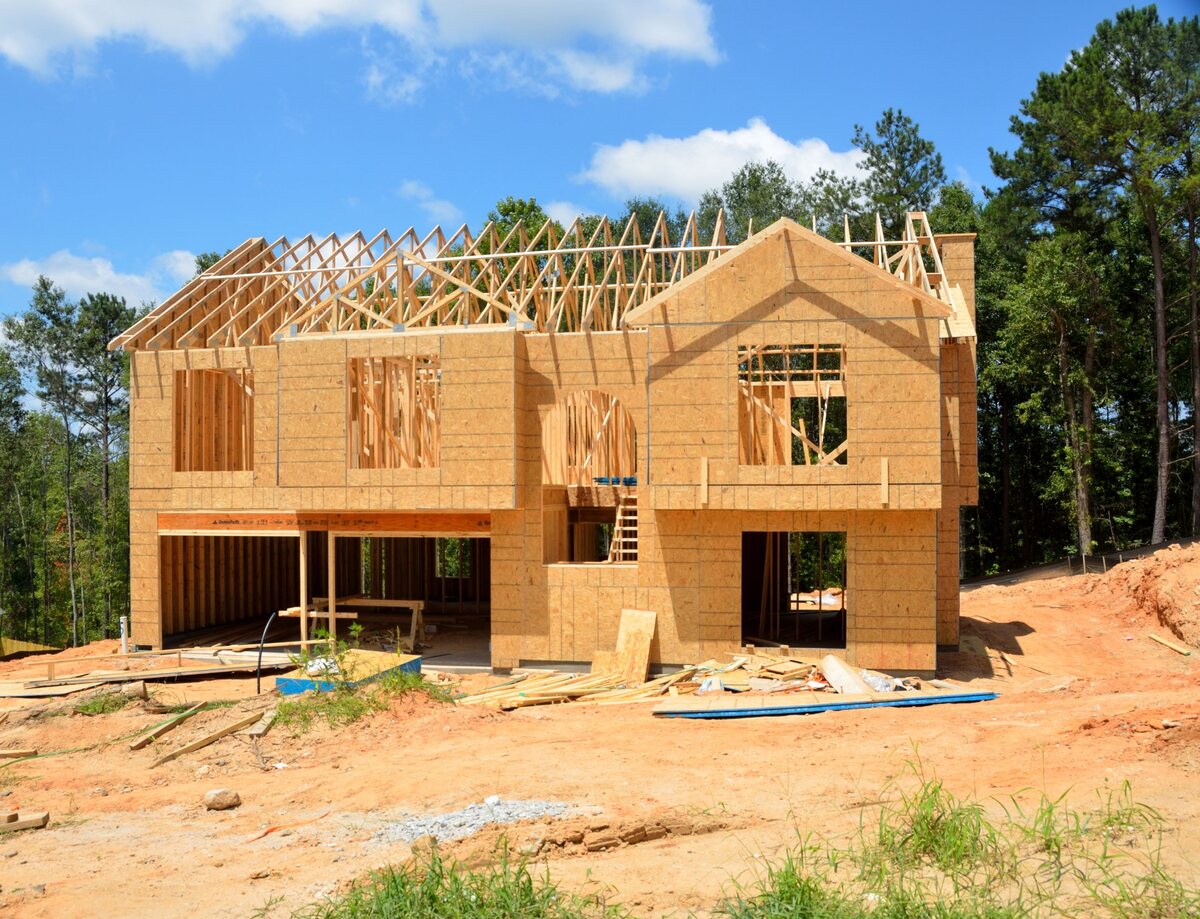


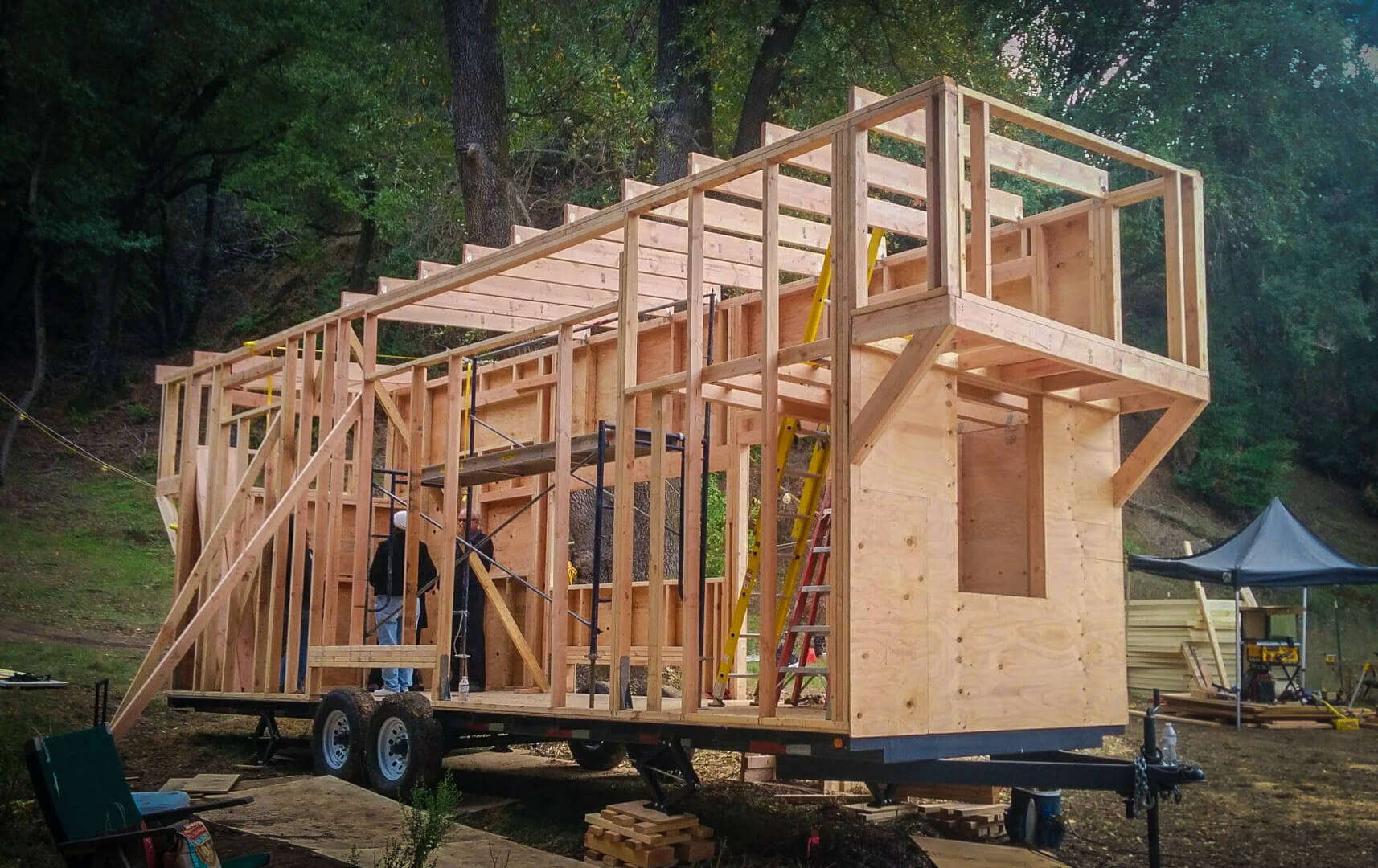
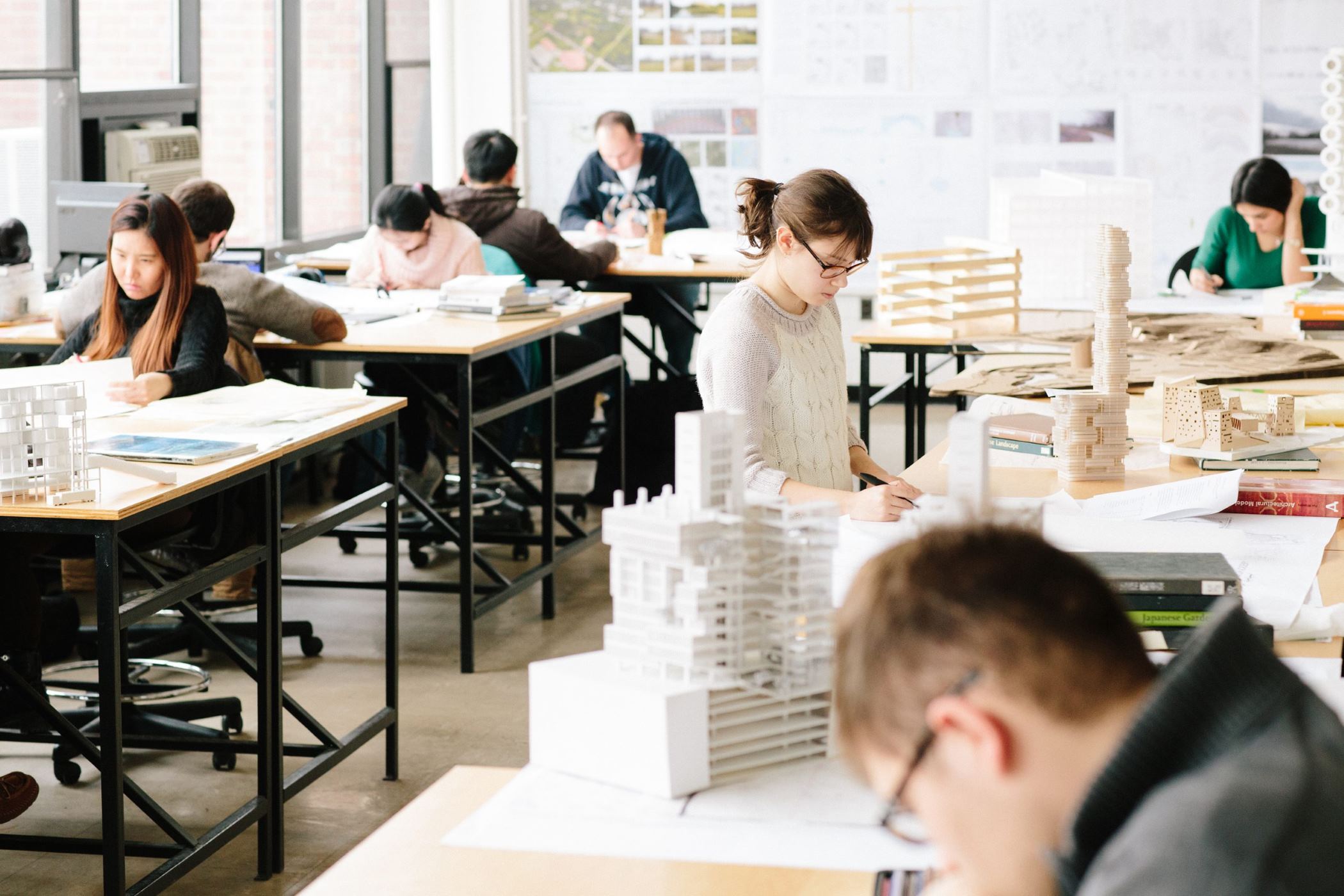
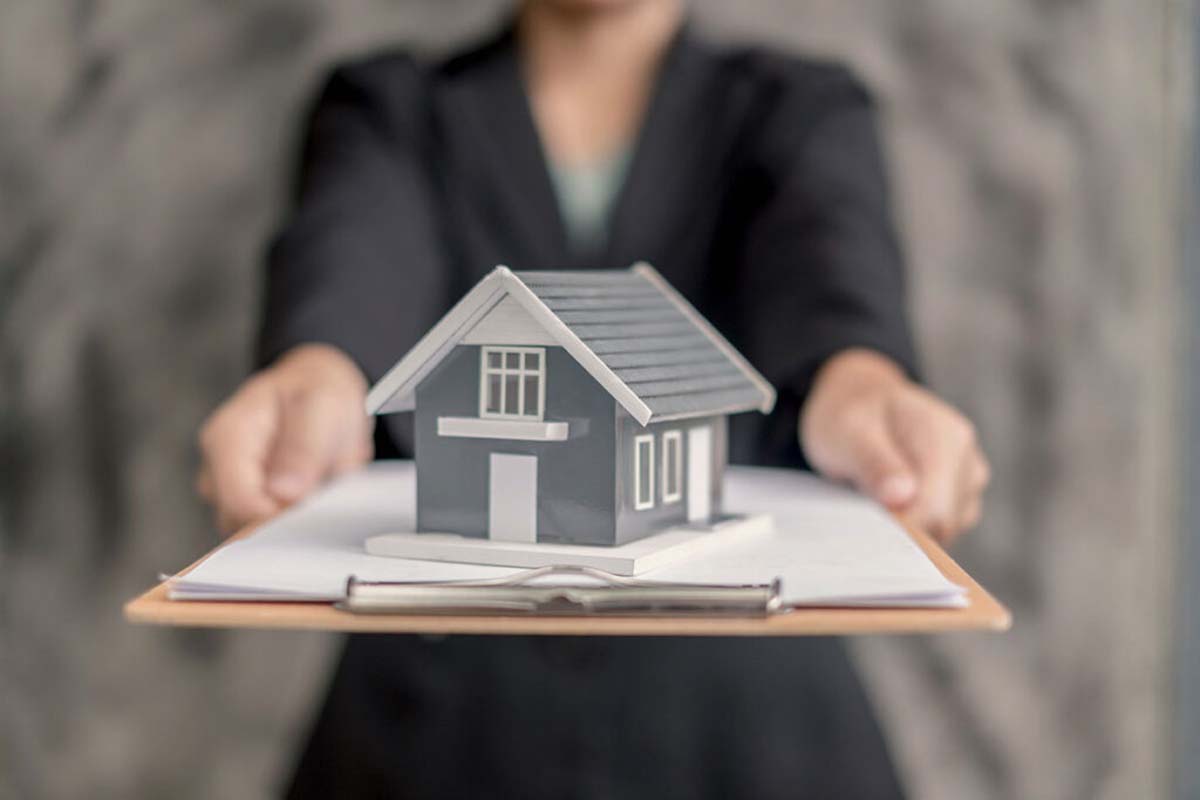






0 thoughts on “What Do You Need To Start Building A House”